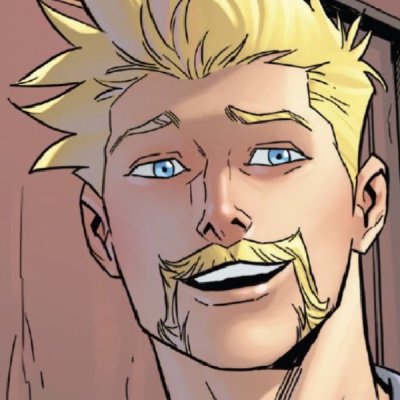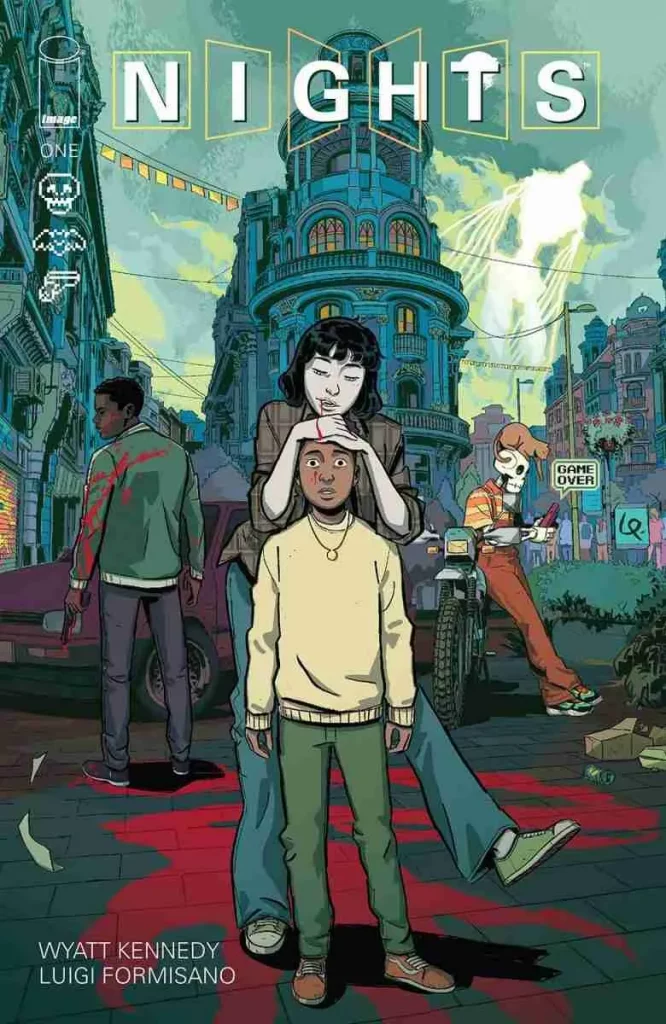Facial Hair, Hang Out Books, and Comic Formats: It’s the June 2024 Mailbag!
It felt like a lighter month in the ol’ Mailbag Q&A, but then I looked at the actual word count and realized I almost threw down 5k in here. Whoops! I guess it wasn’t so light. There’s a lot to get to, though, so let’s dive in, as we start with the most controversial facial hair in comics!

Where do you land on the hotly debated topic of Johnny Storm’s mustache? – Jonathan Bell
Because I love letters columns, I know this is a real thing. People are super worked up about Johnny’s horseshoe mustache in the current Fantastic Four series! Some hate it. Others write in to defend the ‘stache. I find myself falling on the latter side and it’s for a variety of reasons.
The first is the biggest: Johnny Storm would absolutely go through a weird facial hair stage in his life. He’s a ridiculous person. If any superhero would grow a horseshoe mustache just because they can, it would be Johnny — especially if he was supposed to be in hiding. I mean, at one point in my life I had chops. CHOPS. It was such a bad idea, but I did it because the folly of youth. I didn’t even have “I am trying to mask my identity” as an excuse. Second is the fact that it looks good. It works for him! Third is the simple idea that it’s fun, and fun is good. Lastly is that even if my position wasn’t already in that direction, the fact that some fans just want nothing to ever change would make me lean that way. Change is good! Very few comic stories of note were oriented on the idea of perpetual arrested development, even when it comes to facial hair.
While I wouldn’t put “Johnny Storm grows potentially questionable facial hair” at the same level of character-based risk-taking as the black suit era of Spider-Man or Daredevil’s secret identity being revealed (several times over), it’s still better than stasis. I support the ‘stache, 100%!
I recently finished Sex Criminals, and I loved it. It seems to me the 2010s had a lot of great ‘hangout’ comics that were more about relationships and friendships than anything else (I know you wrote a column about this once) — Giant Days, Squirrel Girl to name a few more. I feel like that’s dried up recently, though — anything you could recommend that’s out there now? – Sam M.
Wyatt Kennedy and Luigi Formisano’s Nights over at Image is a good fit. It has a lot of genre trappings and does have overarching plot things cooking, but it is absolutely a hangout comic and a very good one at that. I can’t speak to it right now (because my shop was shorted a couple issues and never got replacements), but Rainbow Rowell and Andres Genolet’s She-Hulk/Sensational She-Hulk run absolutely fits this idea (although it was just revealed to be ending). Both of these are imperfect fits, because they definitely are about problem solving as much as characters chilling with each other, but Birds of Prey and Fantastic Four have elements of that in them (and really, the heart of both is in the relationships).
There are others that touch on that, but the hangout comic isn’t quite as prolific as it once was. I have a theory about that. I think the rise of the limited series as the dominant form for single issue comics has robbed us of those books. If you have a confined space to work with, you’re going to focus more on plot and telling your story rather than luxuriating in relationships like Squirrel Girl and Giant Days and Sex Criminals did. Those comics ran for dozens of issues each, and the current titles that get that far into their runs are minimal these days. I don’t think the disappearance of the hangout comic is a shift of storytelling desires as much as it is a reflection of how these stories are allowed to be told these days.
I might have to write about this!
There has been a lot of talk around publishing formats lately, like the recently announced digests and compendiums from Image. It’s great to see, especially if it just means more circulation for highly regarded books. Personally, I have a very strong preference for Marvel’s Epic Collection style format: 300-500 page standard size paperbacks. Do you have any strong preferences when considering a collection purchase? Are they’re any formats/styles you’d like to see become more prolific or you see as underutilized? What other strategies do you think publishers could employ to make their back catalog more readily accessible to new readers? – Brian Hasty
My #1 factor when I am buying a comic is readability. Everything else takes a backseat to that. This is why I am not a fan of the omnibus. I find them to be a nightmare to read, and they rarely do the art any favors, particularly when it comes to the bigger releases in that format. Art is often lost in the deadly point where everything meets in the spine. That ties into my #2 factor, which is how the format works in terms of showcasing the art. Combine those two and you can see why I prefer slightly oversized hardcovers that collect…let’s say, 10 to 15 issues, tops.
Conversely, value is important to me, so I actually really like digest editions. Pair readability with value and the digest edition is the clear winner. Why wouldn’t I want a lightweight, easy to pack book that only costs me $10 or so for an entire story? That’s incredible. That’s where the third favored format comes in. I do have an affinity for compendiums, because they’re like omnibuses but without the exorbitant cost or the difficulties they present from a reading standpoint. I’d much rather spend $50 on a compendium than on a $125 omnibus that collects the same number of issues. It just doesn’t make sense. That’s why those Epic Collections are great. They’re the proto-compendium in a lot of ways.
So, generally speaking, I’d like more of those. As for the last question, I am actually writing about this topic in the near future, so I’ll just say this: Keep an eye out for that article because I’ll likely be answering a variation of that question within.

Is there an artist out there that you feel is on the cusp of breaking out? – Zachary Jenkins
Being “on the cusp of breaking out” is certainly in the eye of the beholder, if only because the very concept of “breaking out” is a relative one. Does that mean selling a lot of comics? Getting a job on a prominent book? Becoming a commission star? I’m not sure! But I am going to try and lean towards artists or cartoonist who have not hit it big quite yet or those that might be about to hit a higher level.
The top name on my list is Luigi Formisano. I believe Nights over at Image Comics is his debut work (or at least his debut in print), and that guy is incredible. Like, legitimately special. His character acting, his storytelling, his energy, his everything just feels so right in so many ways. There is just so much personality and life to his work, and it was a revelation reading the first trade of that series if only because of how exceptional Formisano’s art really is (Francesco Segala’s colors help too, of course).
I really want to say Owen D. Pomery, even though he’s already had a few books published by Avery Hill and a graphic novel through Top Shelf. So, I am going to say Owen D. Pomery, even though it feels like a cheat. The Hard Switch was a really solid comic, and his art on it — but particularly the cover, which sold the book oh so well — underlines how he’s good now with the potential for greatness.
If Pomery feels like a cheat, then Nicole Goux absolutely is one. Goux has done a whole bunch of work already, but it just feels like she’s about to hit it to another level, with her upcoming YA graphic novel over at Abrams Fanfare with Mariko Tamaki possibly being the project that sends her there. This is one of those picks where the person is established, but I’m waiting for the world to recognize how elite she is. That’s coming for Goux, I believe.
Lastly, here’s a bit of a homer pick. I’m friendly with artist Gavin Guidry, and he’s really been making some moves into Big Two comics over the past year or two, including some recent work on Birds of Prey that underlines his potential. He’s kind of in the Chris Samnee, Leo Romero Toth-y school of artist, but with a whole lot of life and vibes to his work. He’s been sharing some commissions of late that have really wowed me, and if he gets the right project, watch out. If I was a Big Two editor, I’d be looking for the right fit for him and then just letting him do his thing because he’s going to kill it when he gets the chance.
Actually, let’s do just a few more in a quick speed run. Here are some names for your breakout consideration: Tri Vuong, Xanthe Bouma, Matt Rockefeller, Boya Sun, Tan Juan Gee, Hwei Lim, and VER. And I will probably come up with 75 different names I am going to be annoyed about forgetting later!
subscribers only.
Learn more about what you get with a subscription
